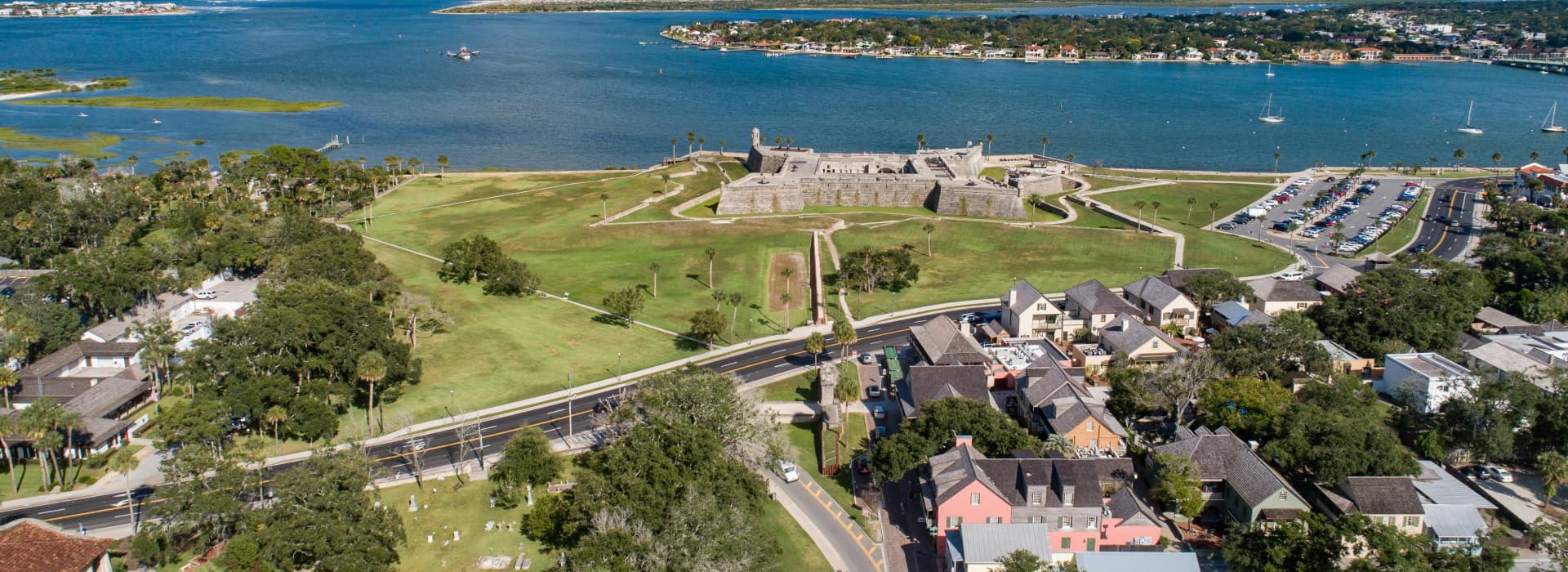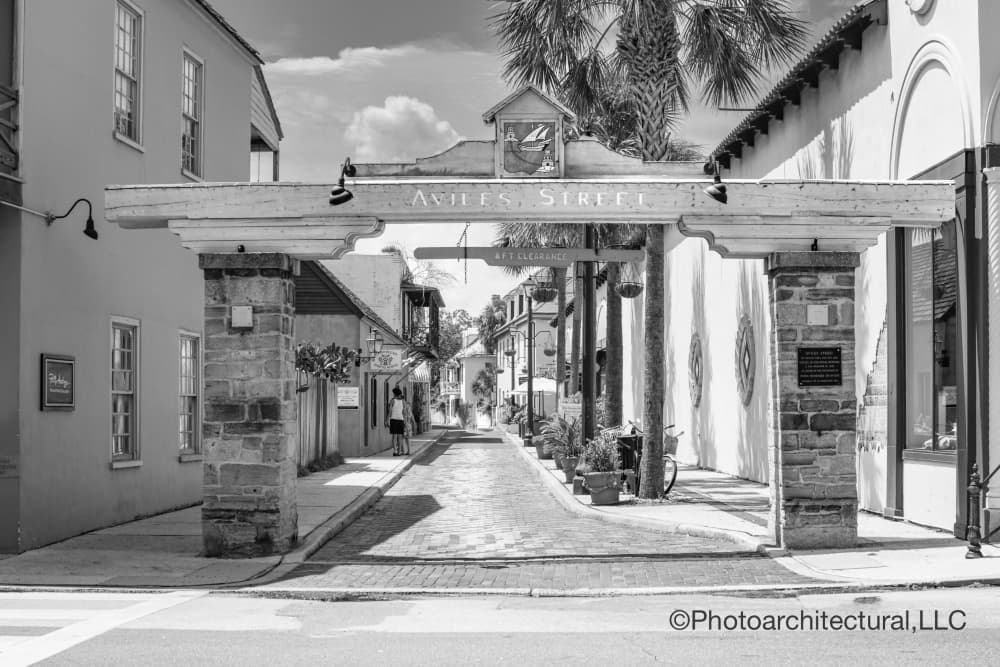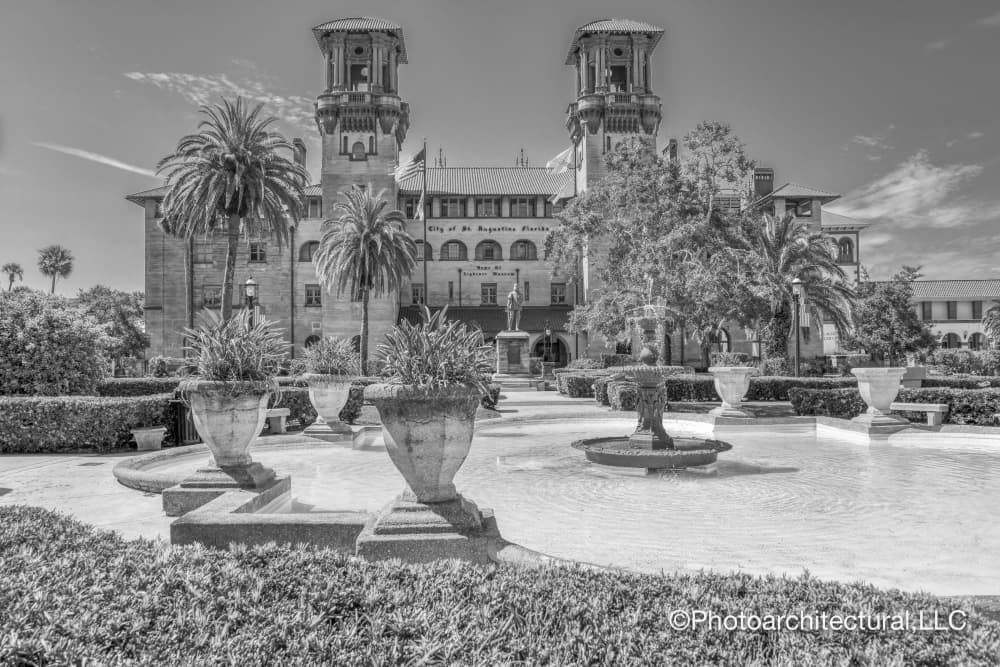
Step into the Rich History of St. Augustine
Conquistadors, Oil Barons, and Historic Hotels
The land that would one day become known as St. Augustine was once occupied for centuries by the Timucua people, a Native American tribe who occupied most of North and Central Florida. The Timucua were the largest indigenous group in the area practicing agriculture, hunting and gathering with their primary food source coming from the sea. The first European to explore the area was Juan Ponce de León, in 1513, on his search for the Fountain of Youth. He was followed by Captain Jean Ribault, who sought to colonize the area for the French. Hoping to secure the region, the Spanish Crown sent conquistador Pedro Menéndez de Avilés to create a settlement, and in 1565 he founded St. Augustine, making it the oldest continually-occupied European settlement in the US.

The next three centuries were a tumultuous time for St. Augustine. The Caribbean Sea and the lands that surrounded it were home to warring native groups, aggressive European colonizers, and opportunistic pirates. The outpost was sacked and burned multiple times, most notably by the English, before eventually being ceded to Great Britain in 1763 as part of the Treaty of Paris. The city was returned to the Spanish 20 years later. The United States increasingly considered Florida and its peninsula to be of great value, which led the U.S. to later devise a way to acquire Florida; the Adams-Onîs Treaty established Florida as a U.S. territory in 1821, later becoming a fully fledged state in 1845.

The city of St. Augustine withheld many changes throughout American history. It was one of the few places Abraham Lincoln's Emancipation Proclamation actually freed slaves. It became a glittering winter getaway spot after a visit from Henry Flagler, whose railway helped connect St. Augustine to other major east coast cities. Flagler's connections helped redesign the city's architecture and look to celebrate its Spanish history, making it much more appealing to people in the northeast. St. Augustine became considered the Newport of the South. Throughout the 1930s to the 1960s, the city went through a great period of restoration, the State of Florida aiding in the restoration of colonial buildings and areas across the city, enshrining the rich historical value. One major moment in defining St. Augustine as a top Florida destination was the establishment of Henry Flagler's three hotels, creating a chain reaction of booming tourism for the city.
St. Augustine Today
Modern St. Augustine owes much of its development to Henry Flagler, who co-founded the Standard Oil Company with John D. Rockefeller. In 1883 Flagler spent a winter in St. Augustine and was taken by the city's charms. He wanted to turn the city into a vacation destination for wealthy northerners, so he purchased smaller railroads and combined them into the Florida East Rail Company. He also built and purchased large hotels, imbuing them with Moorish Revival and Spanish Revival architecture, which gave the city a unique, exotic skyline.
This colorful history is still alive in St. Augustine today, with its charming cobblestone streets, quaint colonial homes, and enchanting Spanish flair. The imposing Castillo de San Marcos, the oldest masonry fort in the U.S., still stands today and dates back to 1695. Elsewhere, some of the historic hotels have been transformed into museums, and the central Historic District invites you to step into the city's past. With such an inviting blend of history and hospitality, it's no wonder St. Augustine remains one of Florida's most popular destinations.
